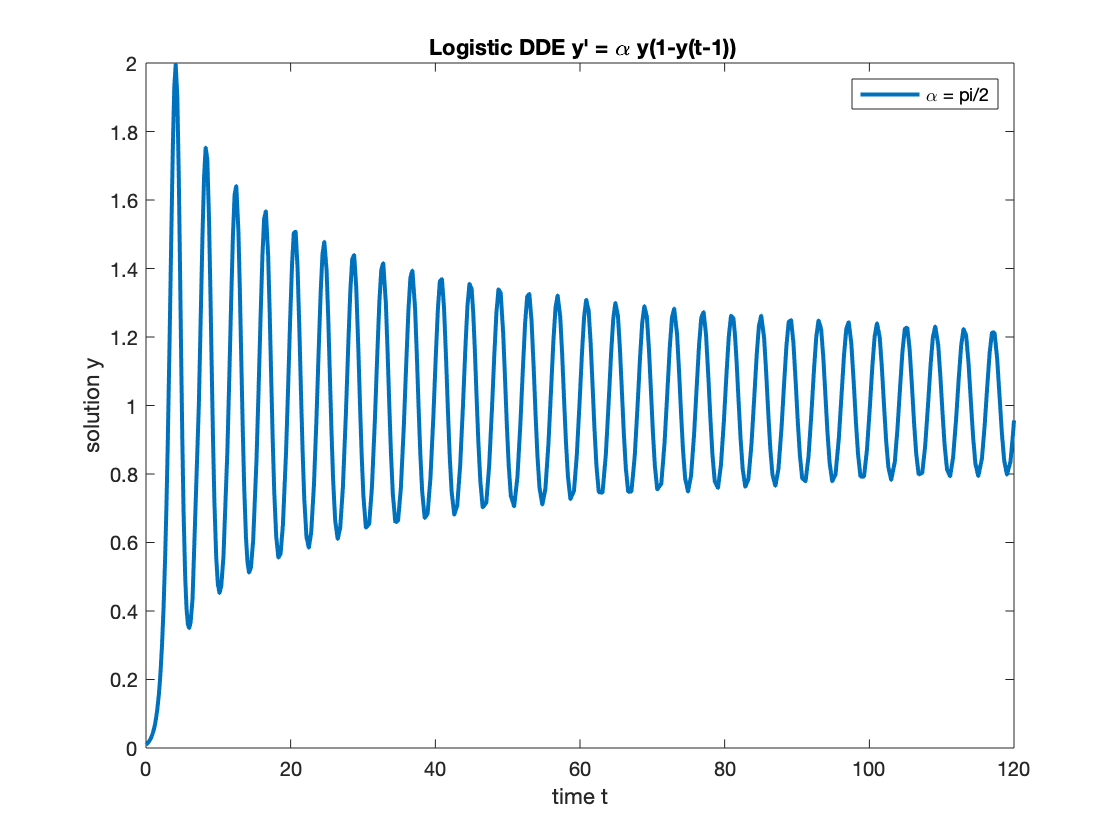Delay Differentioanl Equations
We follow the lecture notes by Professor Richard Bertram https://www.math.fsu.edu/~bertram/lectures/delay.pdf to present a short introduction to DDE.
A simple example
Recall that for the linear ODE
where is a given constant, the solution is
Consider positive initial value, i.e., . When , it is exponentially increasing to infinity as and when , the function decays to zero exponentially.
As a simple example of the delay differential equation (DDE), we change the time variable to , i.e.
To solve , we need function value on more than a single initial value . The dynamic system defined by a delay differential equation is also quite different.
Let's try to solve DDE . For simplicity, we consider for .
For , the equation can be simplied as and the solution is
With this is known, we can move to the next interval , the equation becomes
We thus get the quadratic function .
- It is easy to conclude the general solution is:
where the constant is chosen to glue these pieces continuously.
So this is just the -th Taylor series of . For , solution is also increasing to infinity. But for , situation is more complicated. For example, from , the minimal point of the quadratic solution is at . Iff , it is out of the interval and thus the function is still decreasing. Otherwise, the solution could go up. Namely an oscilation will be observed in the interval .
Stability analysis
We assume and substitute into to get the so-called characteristic equation of the eigenvalue
This is a transdental equation. When , we have one positive real eigenvalue.
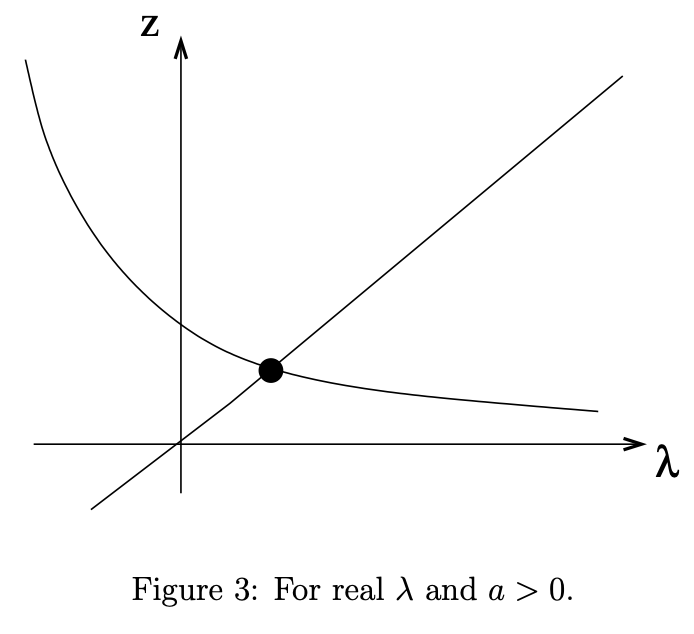
When , it may have: no solution, one negative real eigenvalue, or two negative real eigenvalues.
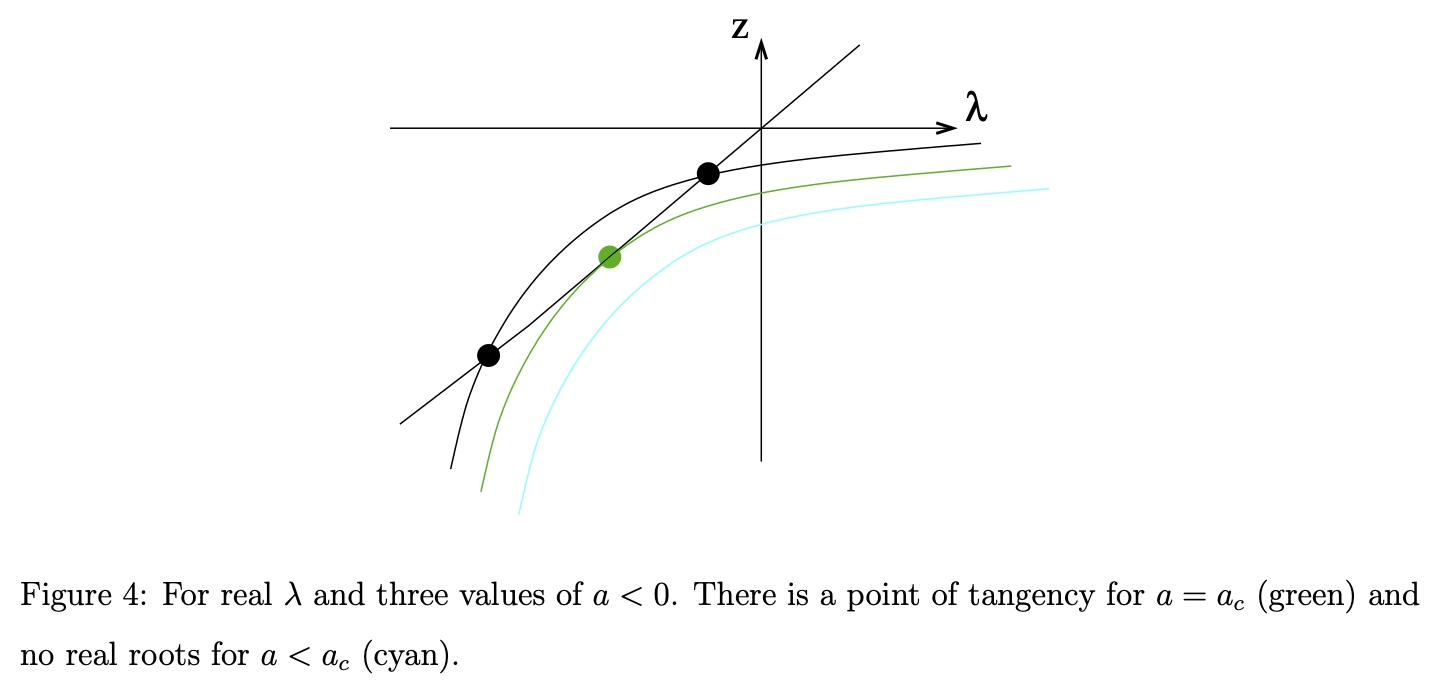
The critical point . So for the parameter , the solution will decay to zero.
How about the case ? There is no real eigenvalue. we need to try complex eigenvalues. By introducing the complex eigenvalue , the exponential function becomes
Therefore if , the amplitude will decay to zero and if it will increase to infinity. Unlike the real case, since trigonometric functions are involved, oscillation with frequency will be observed. By writing the characterisitc equation in complex numbers, we need to solve
Now there are three unknowns but only two equations, so there are infinite solutions to . That is given a parameter , there are infinite many complex eigenvalues.
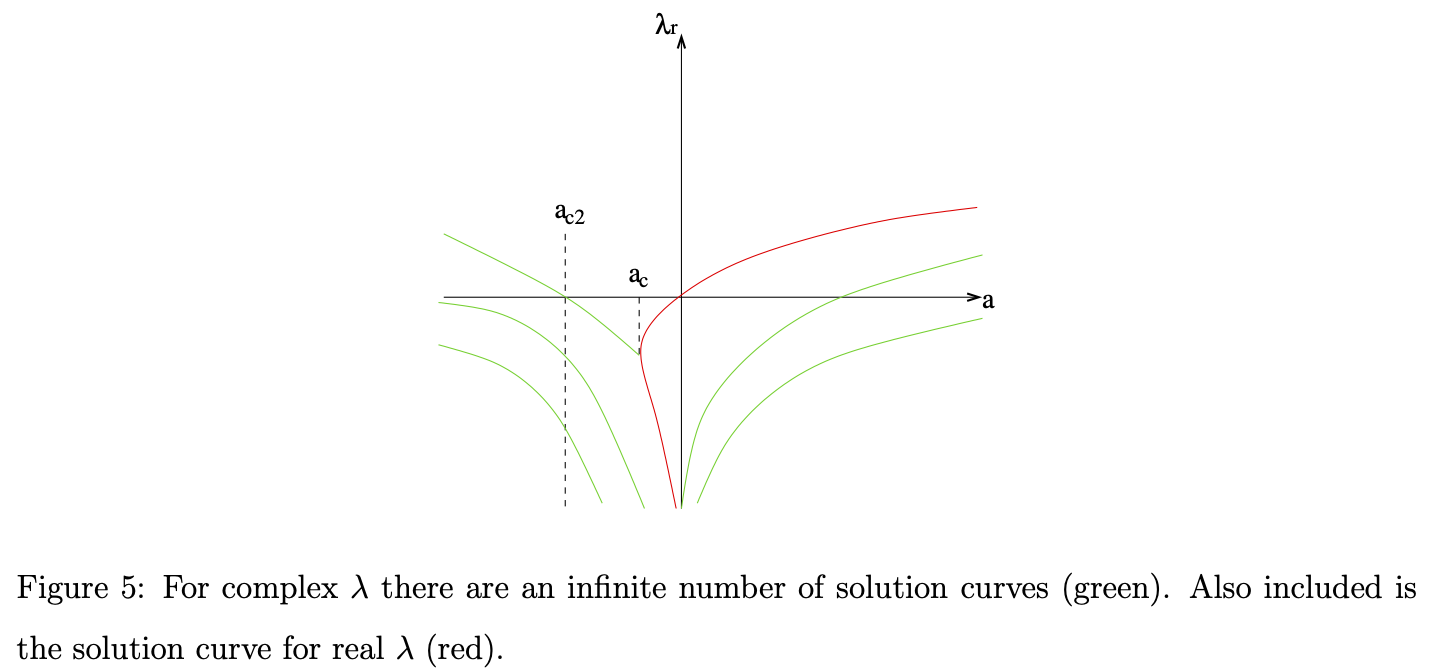
We compute another critical point for which . By comparing two sides of , we know , i.e, for integer . Then from the imginary part, we conclude
We conclude that for , the solution will decay to zero but may contain oscillation.
Numerical examples
We include numerical approximation using MATLAB dde23 for several choices of parameter .
- For real negative eigenvalue, the solution monotonily decrease to zero and behaves like . Here we chose the critical point .
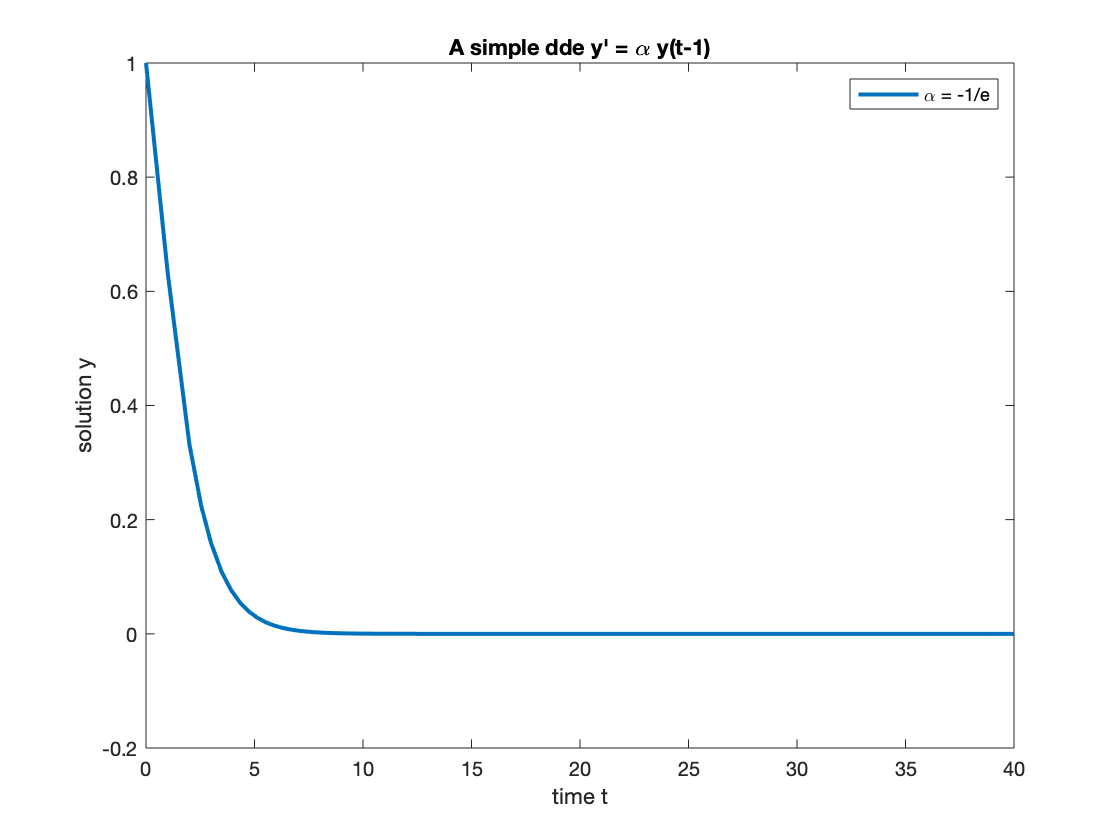
- For complex eigenvalue with negative real part, the solution decays to zero but with oscillations. Here we chose the parameter is slightly less than the critical one .
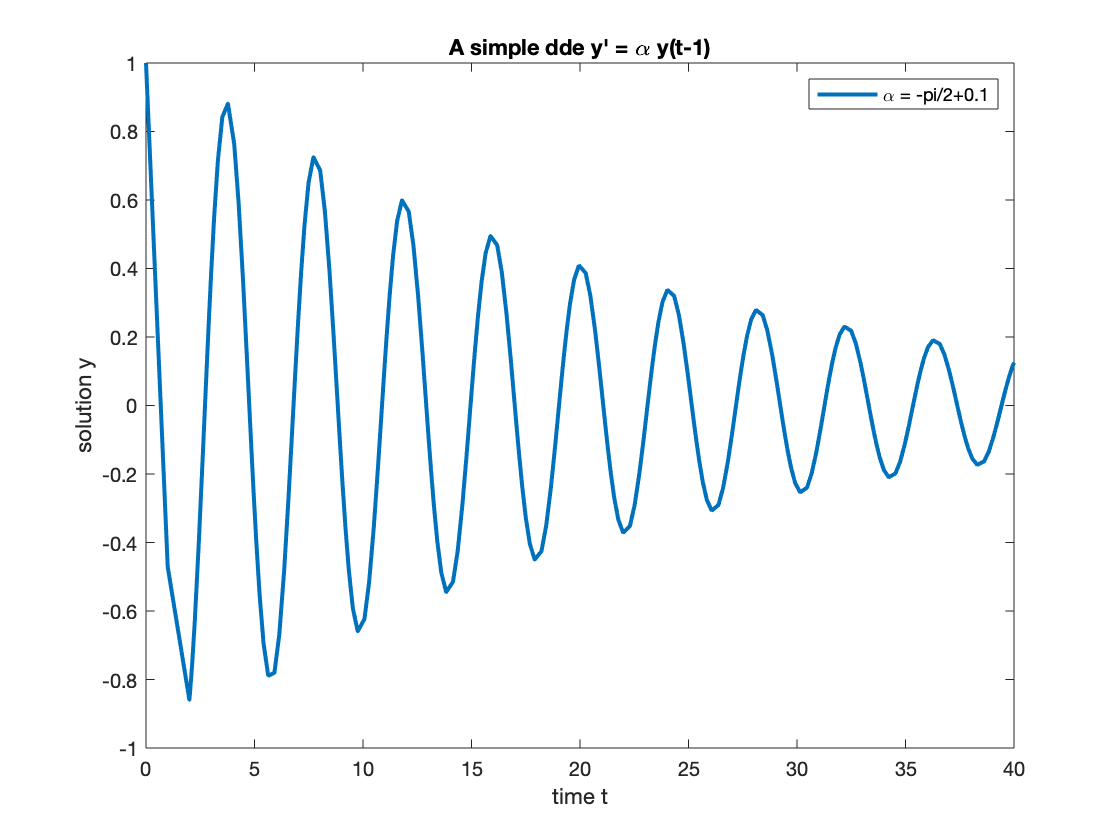
If we cross the critical point and chose , then the real part is positive and thus the solution will incresae to infinity but again with oscillations.
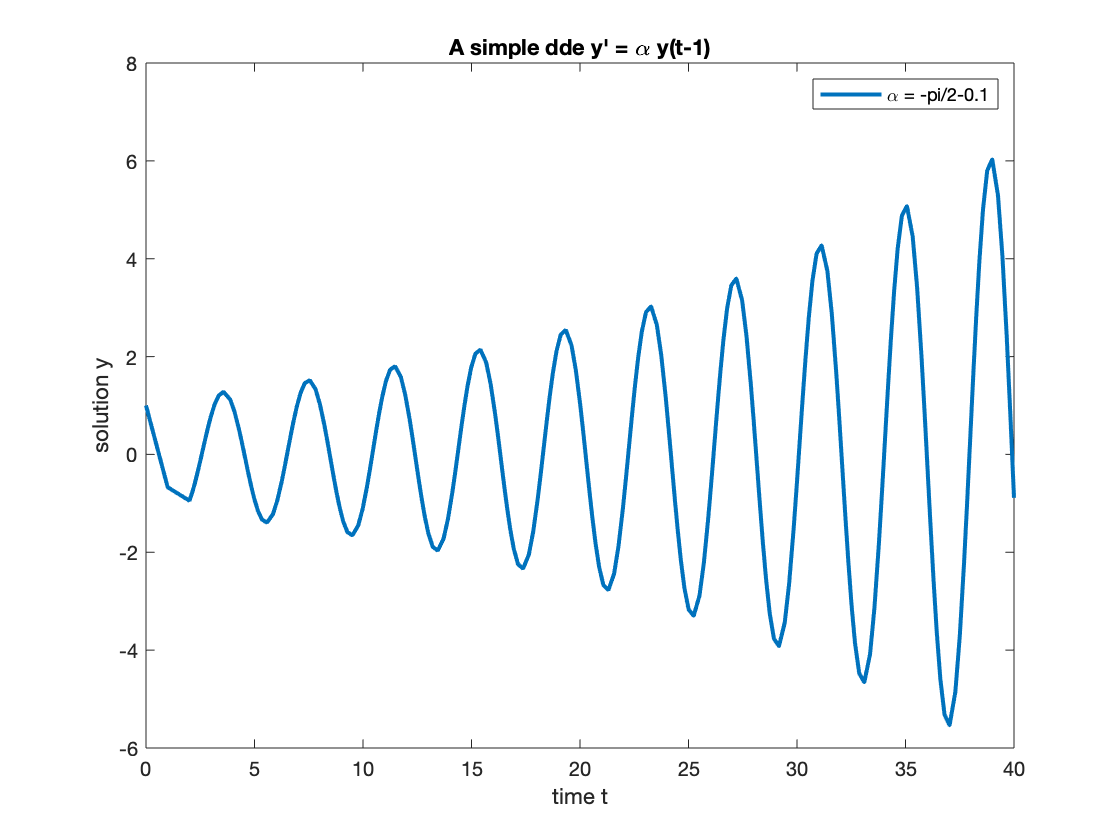
When , the ampulity does not change. We get a periodic solution.
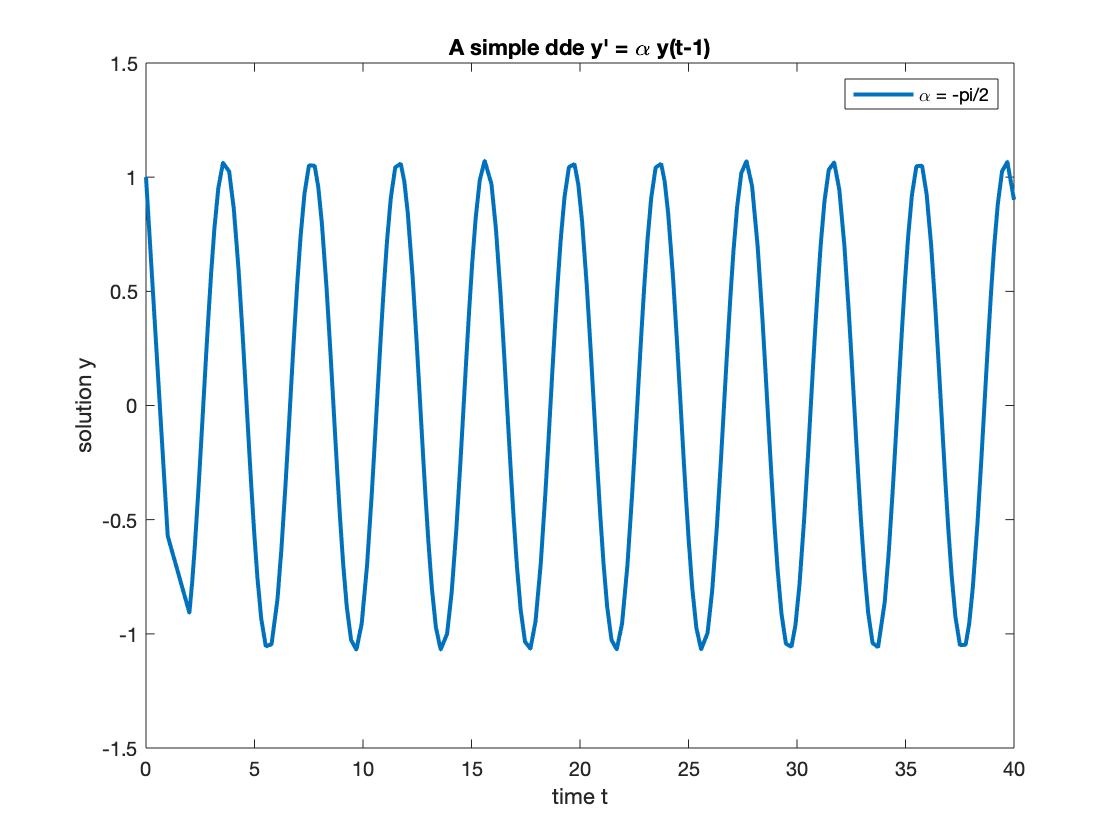
Delay Logistic Equation
We first recall the logistic ODE
whose solution is the logist function
The constant is determined by the initial condition . When , the function will transit from to . Recall in the simplest SI model, behaves like a logistic function and in SIR model, can be appproximated very well by piecewise logistic functions; see [Perturbation Analysis of SIR model][https://www.math.uci.edu/~chenlong/CAMtips/Coronavirus/SIRperturbation.html].
Now we introduce delay feedback into the logistic equation. Denoted by and consider
We are interested in if is a stable equilibirum of .
The stability analysis is to assume with perturbation . If as , then is stable. Otherwise it is unstable.
Substitute into and skip the quadratic part, we obtain a simple DDE
for which we have done the stability analysis before. Note that the sign of parameter is changed.
The conclusion is: for , is stable. But for , it approaches to the steady state will oscillations. We now illustrate by several numerical examples.
- For , the solution is more or less like the one for standard logistic function. It can be expected that for smaller , the behavior is similar.

- For , the solution will still approach to but with oscillation.
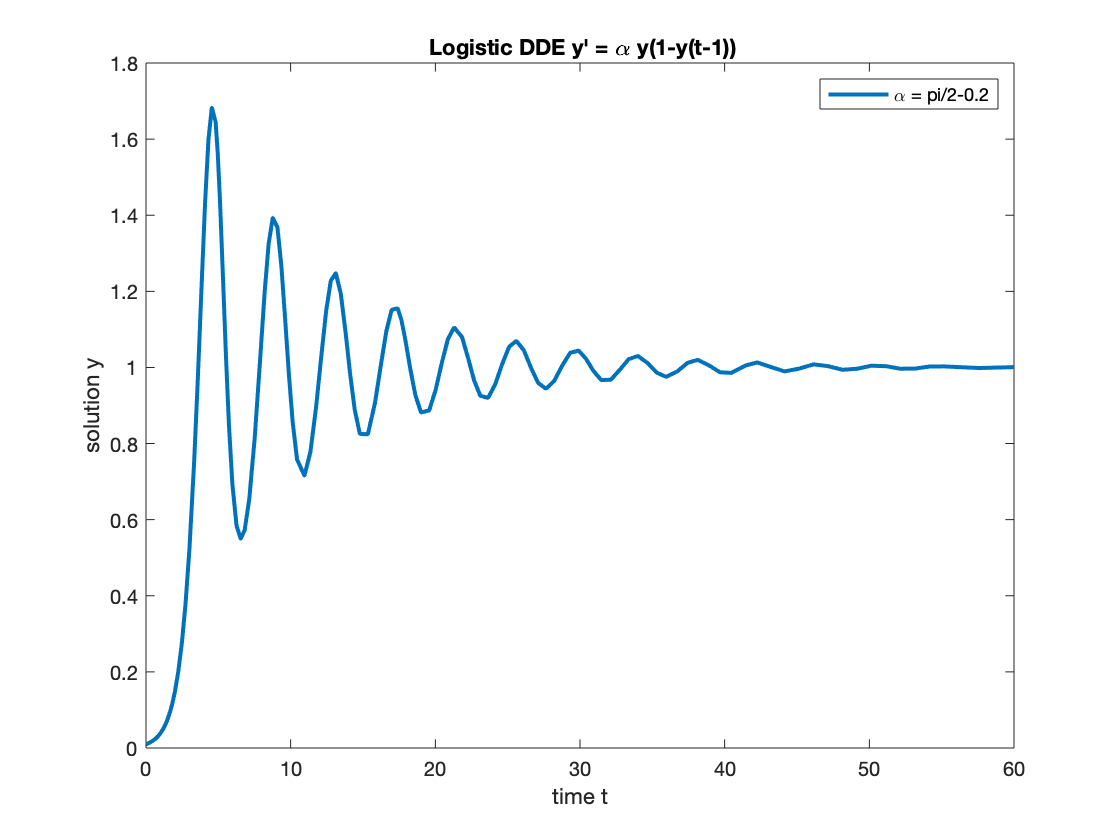
When the solution has some physical or biologic meaning, may not be a meaningful approximation.
- For , the function doesn't below up but approaches to a periodic function very quickly.
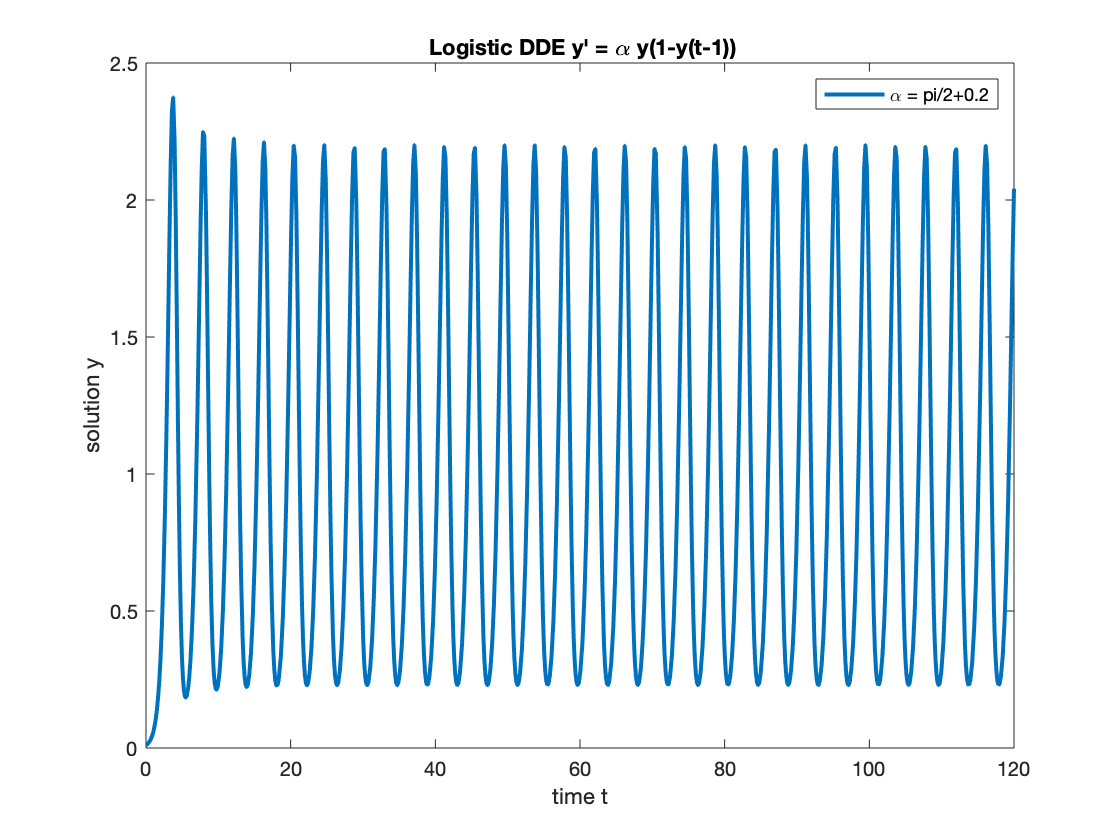
- For , the solution decays to a periodic function with center line .
